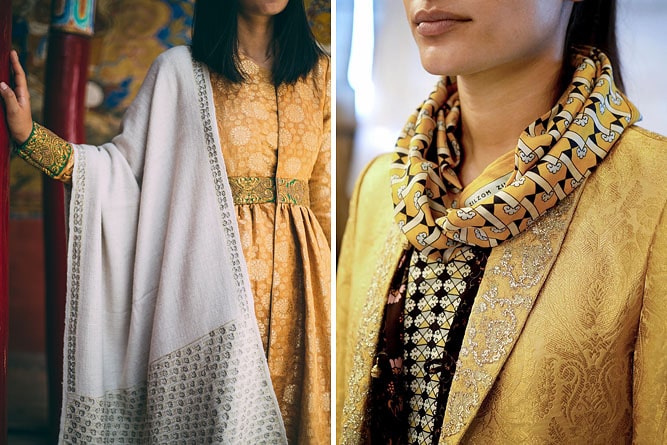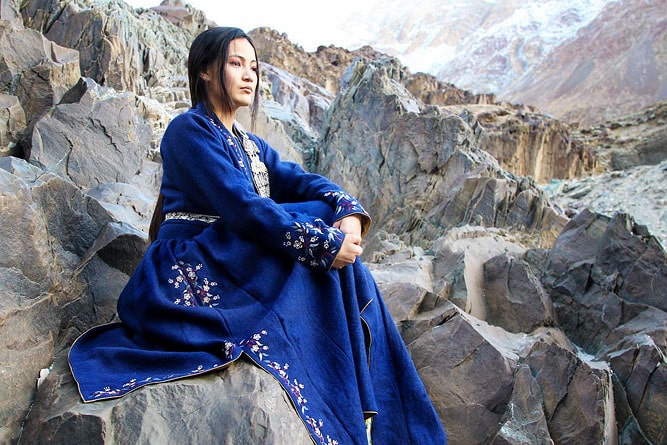Have you ever wondered what kind of attire and jewellery people of Ladakh wear? How do they look, what are they made of or called? So, if you are piqued of these secrets, this is the right place to begin scratching your curiosity. Attires and ornaments speak volumes about the geographical, cultural and traditional peculiarities of a community. And, Ladakh is no different; the snow-capped mountains, treacherous terrains and cold deserts hint at freezing winters with temperatures often touching minus 30°C.
The traditional livestock rearing has enabled people of Ladakh to protect themselves and their loved ones from harsh winters. The sheep, goats and yaks not only provide for their food but also clothing. People weave high quality thermals, shawls, caps and socks from the wool and pashmina produce. In fact, the woollen clothes and pashmina shawls of Ladakh are famed across the world for their uniqueness of warmth, suppleness and feel-on-the-skin of the wearer.
Ladakh has been a cosmopolitan region, since its Silk Route days. Consequently, we have a blend of dresses, attires, beauty gears from different communities and tribes. To have a sneak peek at them, follow us through the post.
Goncha (traditional Ladakhi robe)
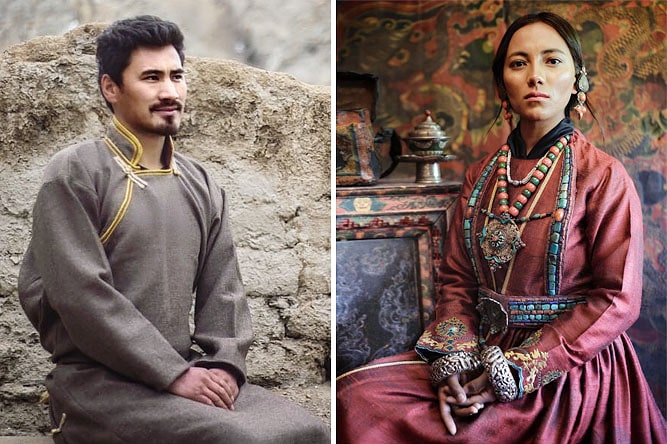
Photos: Jigmet Wangchok and Namza Couture
Speaking of attires of Ladakh, people wear a thick woollen robe called Goncha (the traditional gown) with accessories such as Tipi (hat), Lokpa (a thick cloak worn by only women that provides extra warmth), Bok, shawl or Tsa-zar for men. Goncha or Kos or Sulma are the main dress worn by all the communities in Ladakh by both the sexes, accompanied with a colourful sash tied around their waist. The women’s robe, however, flares downwards with small pleats accentuating it into a flowy gown.
Kos Kar (Changpa nomads clothing)
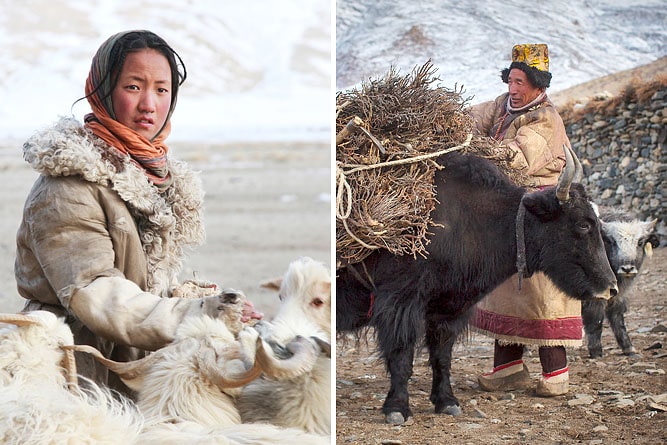
Photos: Cat Vinton and Andrew Newey
Ladakh is divided in terms of geographic directions, East, West, North and South (Shar, Lo, Nub, Chang). To the east near the Chinese border lies Changthang, a high plateau home to nomads called Changpa. They have a different tradition, costumes and dialect with Tibetan influence. The most prominent sight of Changpa clothing is their whitish thick robe called the Lawa Goncha or Kos Kar. Considering their pastoral life style and climatic conditions, Kos Kar is exceptionally warm and rugged. They are made of sheep wool and skin turned upside down. Similarly, their robust shoes, handmade of animal skin and felts protect the Changpas from chilling cold, treacherous terrains, while assisting them walk on cold deserts of the eastern highlands.
Yogar or Lokpa (Ladakhi cloak)
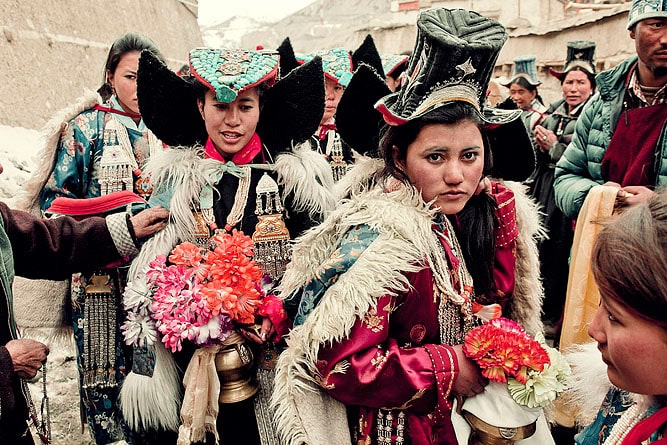
Photo: Jimmy Nelson
Yogar or Lokpa is another distinctive garb worn only by women around shoulders to cover their backs. It’s a peculiar wardrobe that you would love to know about. The cloak is made of sheepskin with the woollen part facing inside touching the body of the wearer, while outside it’s usually printed or covered with a green fabric, accented with patterns of red or silk brocade to look appealing. Yogar is designed to provide the wearer warmth and cushioning for their backs while carrying heavy loads during their chores. In the olden days, Yogar was a necessity for women. However, today, they are been used as accessories during festivals and public gatherings such as marriages, child birth celebrations and so on. The designed and beautified Yogor or Lokpa is called Bok.
Tibi or Tipi (Ladakhi hat)
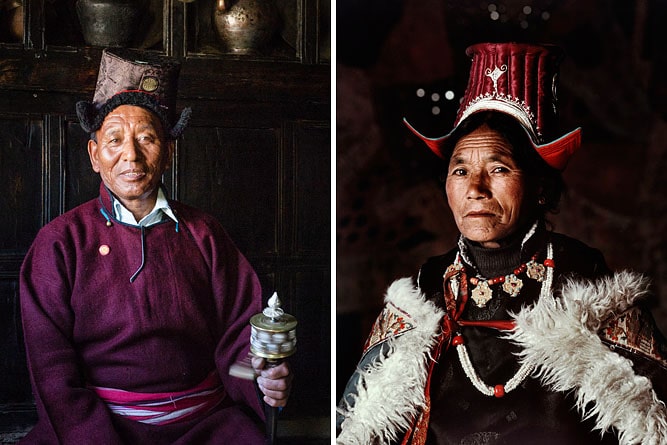
In Bhoti or Ladakhi language a hat is called Tibi or Tipi. The Buddhist community have a tradition of wearing colourful Tibi in everyday functions or, their women, a heavy headgear on special occasions; on that we will read later in this post. Only women wear bright and colourful caps mostly made of silk, whereas the men use hats covered with maroon cloth or monochrome silk.
Perak (Ladakhi headdress)
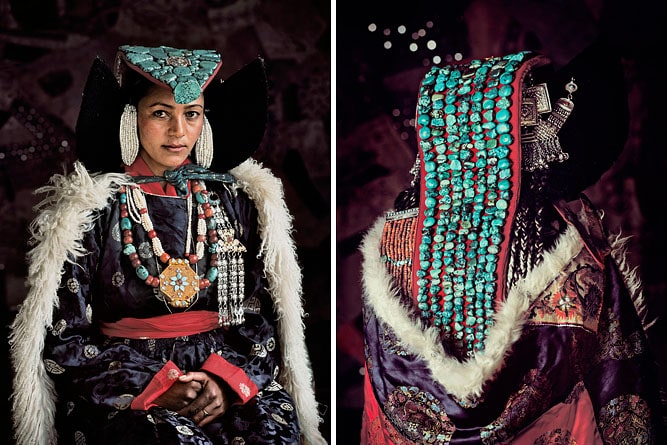
Photos: Jimmy Nelson
Although the clothing of Ladakh have shared designs and make in our different communities, jewellery makes a different story. In Ladakh, as most of the tribal communities, women hold much of portable wealth of their families. And, their precious possession is the Perak, a huge and heavy blue headdress that runs from the wearer’s forehead until her lower-back. The unique ornament is inlaid meticulously with blue turquoise stones on a padded base, while its edges are embellished with silver charms and coral trinkets. Needless to say, Perak is considered a status symbol of the possessing family, and it’s passed from mother to her daughter as an inheritance. It’s said when tracing the owners, a few of still existing Perak could reveal a complete lineage of the families, stretching deep into the historical times.
Jugin (Ladakhi Muslim headdress)
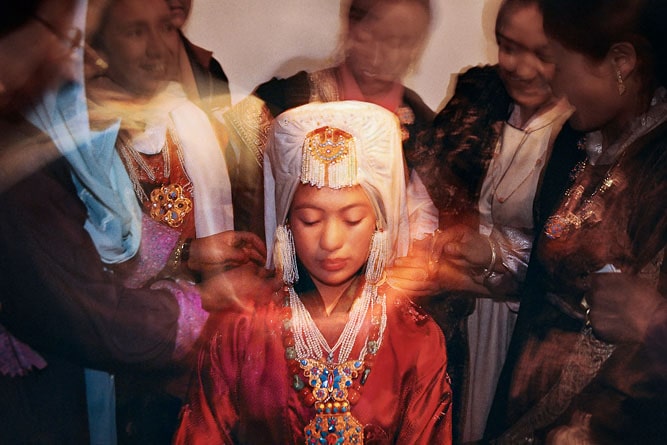
Photo: Nevada Wier
In the Muslims communities, the Perak is replaced by Jugin. The women adorn themselves with Jugin, especially on their wedding day. The ornament consists of a block of gold with tassel of pearls hanging from her forehead, followed by a beautifully designed see-though drape with embroidery which covers her face and back. On other occasions, the Muslim women wear a plain cloth to cover their head following the principles and beliefs of Islam.
Gau or Kau (Ladakhi amulet)
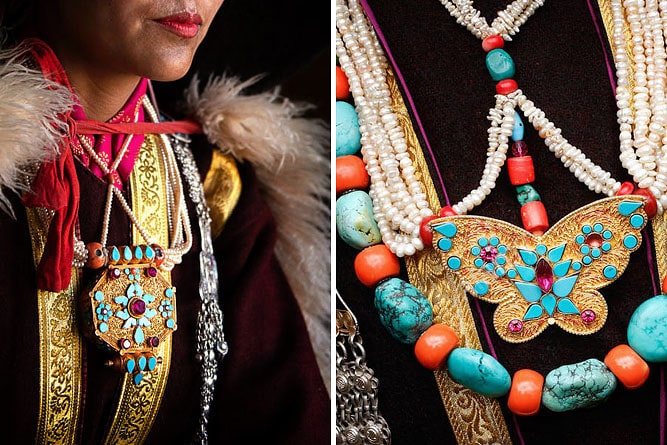
Well, the next precious piece of jewellery we bring to you is the Gau or Kau. It’s a hexagonal or octagonal golden amulet of the size of a fist, enamelled with precious stones and pearls along a fine and intricate design. Pema-lab-tse is a play on its design, which emulates butterfly. Women across Ladakh cherish Pema-lab-tse for its feminine and delicate attributes.
To the north-west, the western region particularly, we see a different shade of culture resulting from a mix of different communities. The rich culture of Balti, Purig or Pod-riks is the result of local innovations and exchanges with the Indian plains, Central Asia, Tibet and West Asia. Purig or Pod-riks culture came about when a Balti Princess Gyal Khatoon married Jamyang Namgyal, the King of Ladakh, in the 17th Century. Her nuptial introduced various musical instruments, dance forms, sports, cuisine and costumes that became an integral part of contemporary Ladakhi and Purig culture.
Gha-ram Tibi and Ser-po Tibi (Zanskari cap)
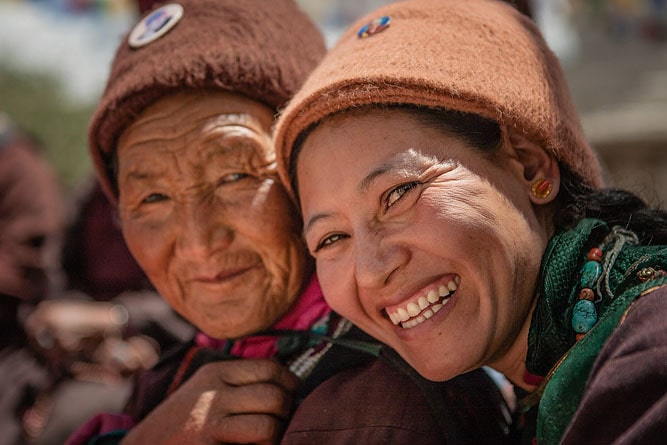
Zanskar lies to the south, a Buddhist majority region with almost similar to rest of Ladakh. Their wardrobe is no different than those we have recounted, except for the women’s peculiar caps. They preferred Gha-ram Tibi, a warm cap made of coarse material of yellowish hue. Unlike the traditional caps of Ladakh, Gha-ram Tibi has Kashmiri influence. Until today, these caps are being imported from Kashmir or Kargil. However, it has etched itself an inviolable place in Zanskar. Ser-po Tibi is made of Nambu, a felt made of wool. The community has in recent years moved back to Ser-po Tibi as a mark of reclaiming their identity. The cap is prepared fully in the region and has a distinct characteristics of Zanskar.
Traditional Brokpa costume
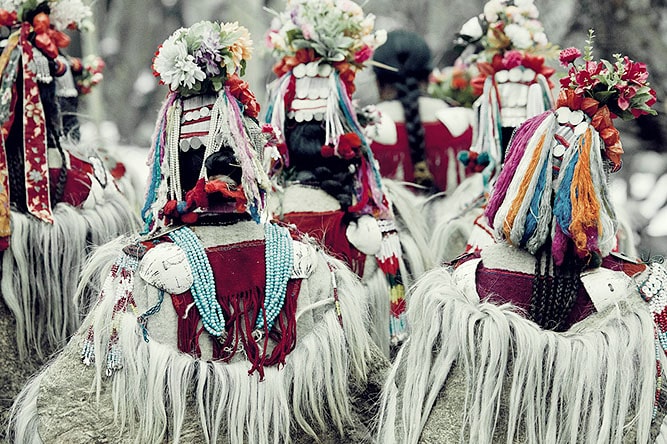
Photos: Jimmy Nelson
Allow us to take you to another renowned part of Ladakh, peculiar for its centuries’ old cultural heritage. The inhabitants of this region have fairly protected their old ways and believe systems even today. The Brokpa villages could be reached following the highway to Khaltse Bridge, then bifurcating towards the Batalik sector.
The Brokpa or Drokpa tribe is ethnically, socially and linguistically different from the rest of the Ladakh. They are animistic in their religious believes and practices. Therefore, Brokpas or Dards have a distinct religion, culture and social norms. Their richness and uniqueness is reflected in exquisite dresses and ornaments. The males wear a woollen dress, white in colour, held at the waist over a pair of woollen trousers. The women don a variant of the whitish dresses, with the Lokpa at their back. Both the sexes use shells, beads and silver jewellery, almost ostentatious for an outsider.
Montho Tibi (Brokpa headdress)
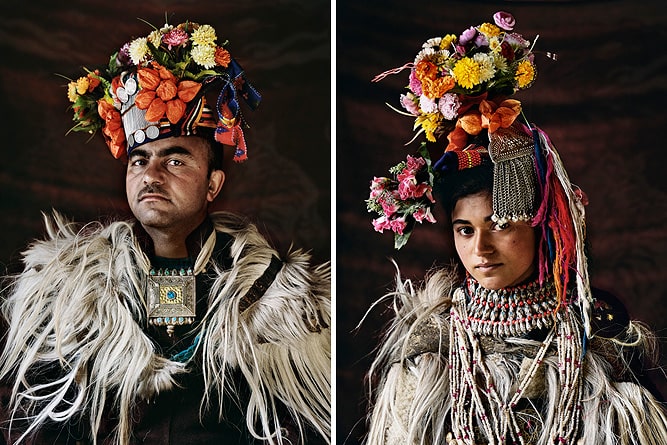
Photos: Jimmy Nelson
The flower-bouquet headgear is another specialty of the Dard people. In their dialect the saffron–bulbous flower is called Montho or Shoklo. A bunch of Montho flowers sits in the cap of its wearer, further adorned with metal trinkets, coins and peacock feather.
We are nearing the end of the post, after considering the important attires of different tribes and communities. We will now quickly gloss through the accessories which enhance the aesthetics and functionalities of the attires.
Thikma (dye technique on wool)
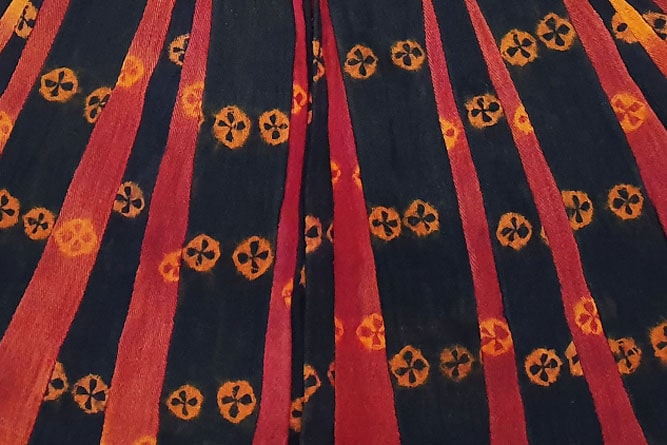
Thikma (resist tie-dye and motifs), mostly seen in Zanskar and Nubra Valley, is a dye technique on wool. The term Thikma is derived from the Ladakhi word “thitoo” or dot. The method is mainly used on narrow woollen belts, Skeraks, people tie on their waist over traditional wears to support these dresses - Thikma accentuates the beauty of dresses and shoes.
Pabu (traditional Ladakhi shoes)
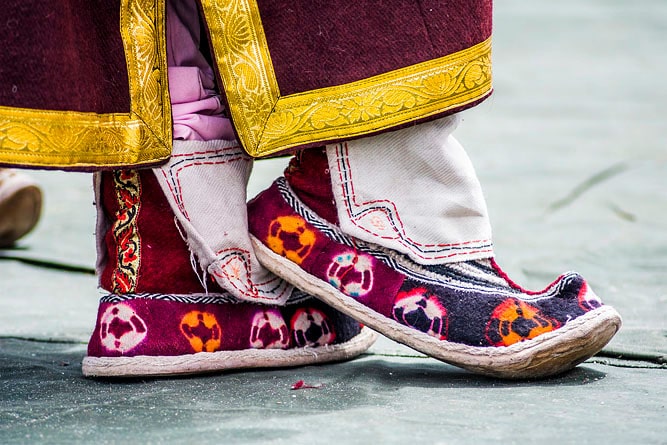
Photo: Saurabh Chatterjee
The traditional shoes, Pabu, are made of goat or yak leather. Their design is uniquely adapt to the landscape and weather condition of the region. When a pair of shoes is decorated with Thikma stipes on its sides, they are called Thikma Pabu. Simple types of shoes like Khulu and Lapul Pabu were used for long, before Thikma Pabu was invented in Nubra - the latter provided both the functionality and aesthetics.
Fashion designers from Ladakh
The peculiar clothes of a particular region display identity, pride and emotions for their own culture. And, Ladakh has woollen robes, gowns made of yak wool or silk, the Thikma belts, the hats and distinctive versions of pants, shoes made of Nambu or Thikma, jewelleries made of turquoise stones, red corals, white shells and so on.
However, with the changing times, dressing choices have also altered and modernity has overpowered the traditions. The older generation still prefers the traditional but in the city they get lesser takers. Nonetheless, young entrepreneurs and designers are reworking on the different aspects of the traditional clothing to bring a broader acceptance and attraction.
Namza Couture
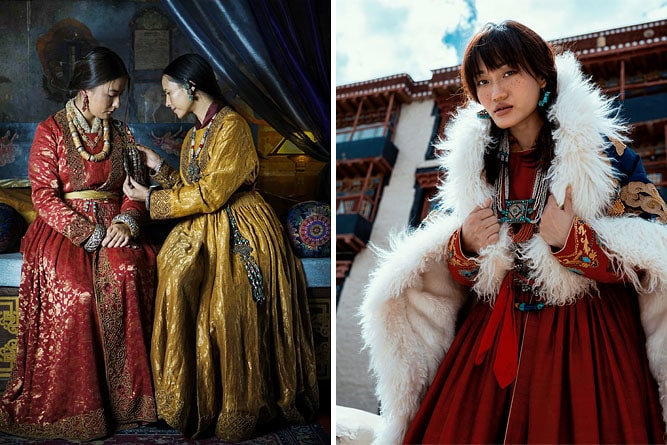
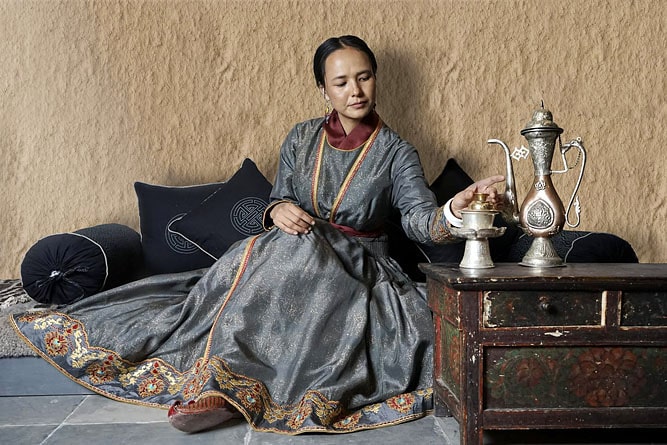
Jigmat Couture
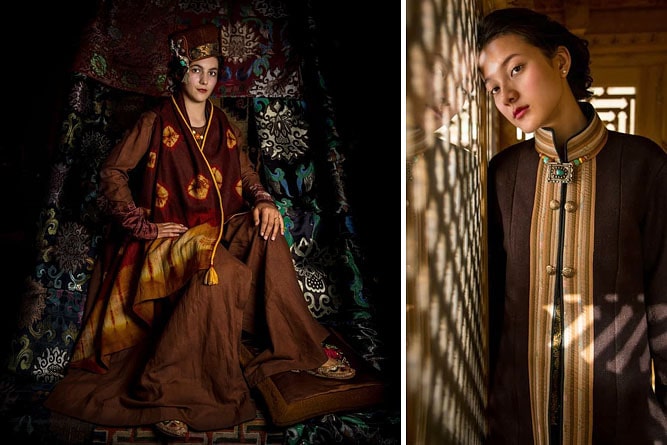
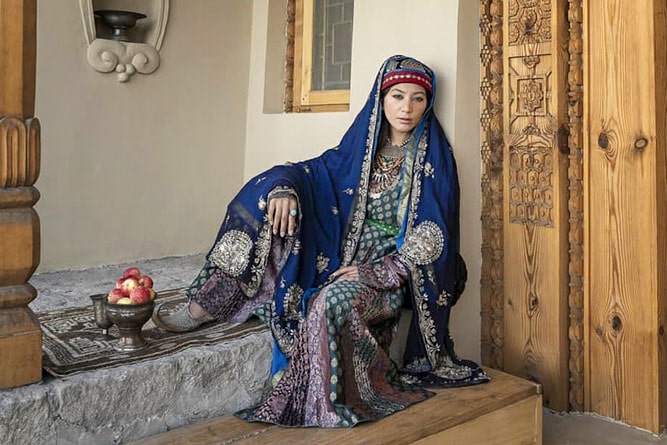
Zilzom
